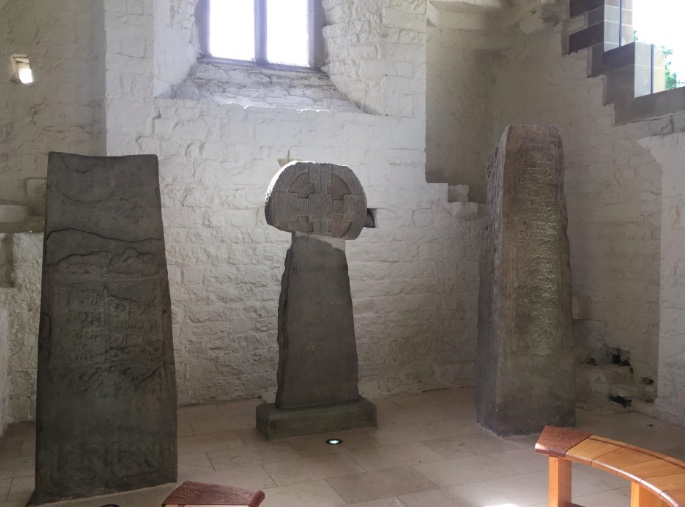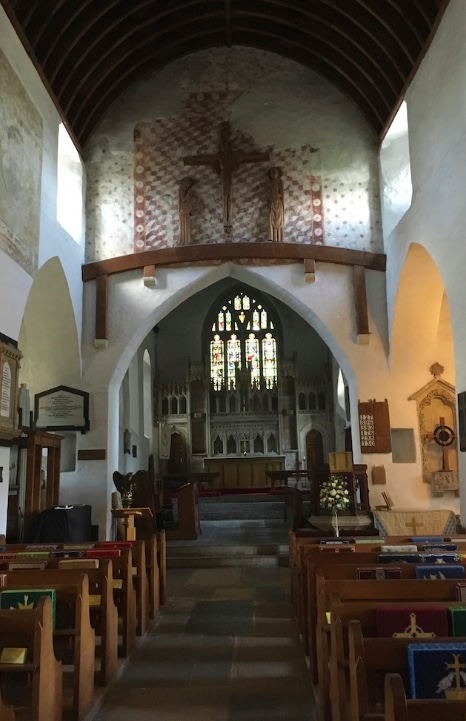Mom and I are staying in a shoebox cottage in Llantwit Major.
As far as I can tell, there’s no such thing as Llantwit Minor. The name of this town in Welsh is Llanilltud Fawr, which actually means something like Great Church of Illtud, or else Church of Illtud the Great, or Illtud’s Great Church…My Welsh vocabulary is a lot better than my Welsh grammar.
The town’s website advertises the ruins of a Roman villa, an Iron Age hillfort, a medieval church, and Celtic stones, so Mom gave us four days here. In the first four hours here, we found the stones on display in what used to be the church chantry, plus bumps in the grass that are presumably the Roman villa and the Iron Age hillfort. I’ve posted no pictures because they’re of bumps in the grass.
Regardless, Llantwit Major has a dense (if microscopic) Old Town. This is a pub built in the 16th century:

Here’s the rebuilt chantry with the Celtic stones, which date from the 9th to 11th centuries:

In pre-Norman times, Llantwit Major (Llanilltud) was host to the first known college in Britain; it was founded in late Roman times but re-founded a century or so later by St. Illtud, who lent his name to it. Illtud attracted students from across Christian Britain. This is a reconstruction of his college (notice that it’s built all in timber and—take a look at the house in the bottom right corner—wattle-and-daub).

This is the interior of the current church. Mom and I couldn’t find any plaques with dates, but it was built by the Normans early on, so probably 11th century. (Parts of it were rebuilt in the 13th and 15th centuries).

Here’s the front bit of the church—I’m sure there’s a technical term for it, but I’m better with castles than churches—with some intriguing old frescoes. I’d love to know when the frescoes date from, but even Wikipedia doesn’t know.
